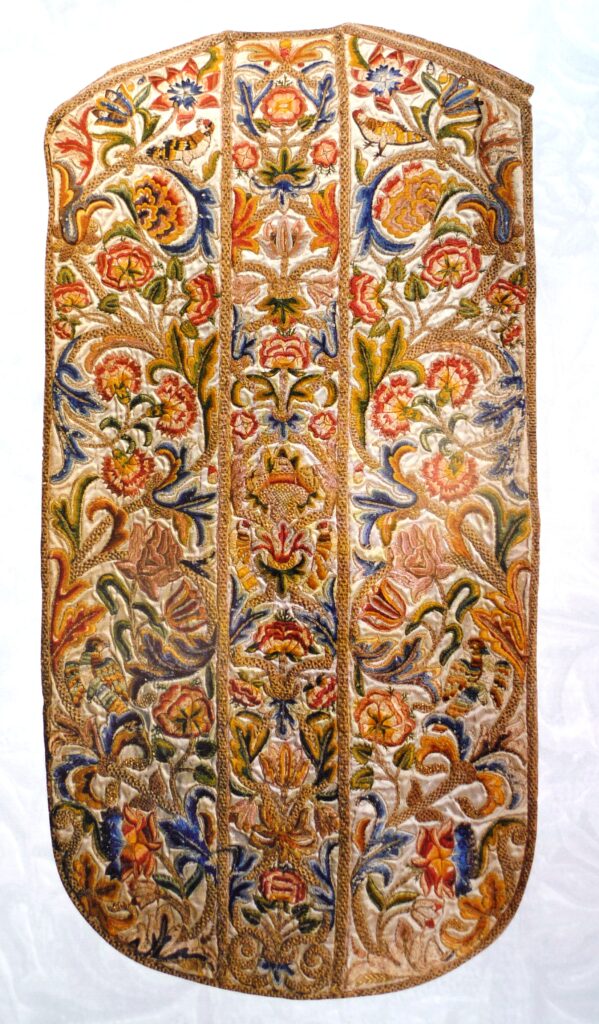
Author: Sicilian manufacture
Date: End sec. XVII – beginning sec. XVIII
Material: Satin embroidered in gold and polychrome silks
Size: 145×300 cm (piviale), 95×130 cm (dalmatica), 120×58.5 cm (planet)
Place: Milazzo, church of San Domenico or the Holy Rosary
The sixteenth-century church of Our Lady of the Rosary, with the adjoining convent of the Dominican Fathers, is one of the oldest and most valuable in the city. Located in the district of the Borgo, it has remained free from the destruction and reconstruction that have affected especially the churches of the lower town over the centuries. Already in the seventeenth century, the convent appeared “magnificent and well endowed by the public […] so increased of factories that you can not wish […] and today it is one of the study centers of the province”. Also the church “beautiful and well adorned”, was endowed by important local families: the Spadafora, the D’Amico, the Colonna, the Cumbo, the De Alarcon, but also by Spanish castellani, as the Cubifar, “noble family of the kingdom of Navarre”, who had the ius patronatus on the chapel of St. Michael archangel. Other rents came from the two speakers, one of “the brothers of the SS company. Rosary that is kept with much decency to be de Nobili”; and the other “of disciplinanti aggregate of craftsmen under the auspices of S. Domenico. In the area of sacred walls, the convent belongs to one of the oldest and most interesting embroidered complete of the city, which has survived to our days.